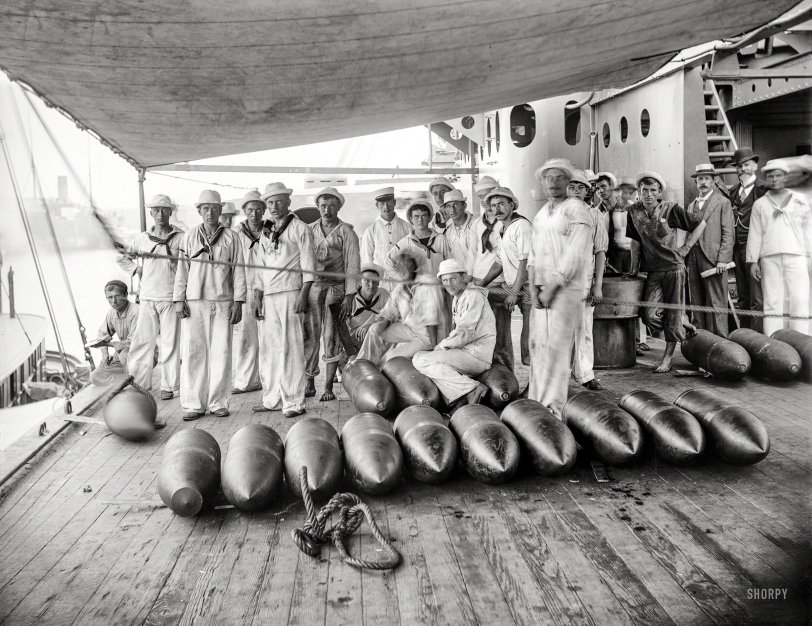


Framed or unframed, desk size to sofa size, printed by us in Arizona and Alabama since 2007. Explore now.
Shorpy is funded by you. Patreon contributors get an ad-free experience.
Learn more.

- Lofty addition
- In 1912
- Keenan Building
- Six years old
- Taken from the P.J. McArdle Roadway?
- It stood only 47 years
- Three track mind
- Incline to the right
- Reach for the sky, 1912 style
- No clean sweep
- Same Job Title, Same Face
- Sadly Lost
- Beautiful ...
- Where you get your kicks
- Aim High
- Pueblo Revival sisters
- Pueblo Neoclassicism
- Milk Man
- Regional dialect.
- Spielberg's inspiration
- Great Photo
- Loaf Story
- Do you still have the Rakes category?
- Could almost be a scene from the 1957 movie 'Hell Drivers'
- The Wages of Fear.
- Conspicuous by their absence
- Got Milk?
- All that aluminum
- No lefties
- Smoke 'em if you've got 'em
Print Emporium
Don't Mess With Texas

Circa 1900. "U.S.S. Texas discharging ammunition." The Navy battleship nicknamed "Old Hoodoo." 8x10 glass negative by Edward Hart. View full size.
Blunt End First
The projectile at left is a "capped" armor piercing shell. Literally, the nose had a blunt cylindrical cap on it that helped in penetrating armor plate on the side of a warship. It seems counter-intuitive, but the extra metal on the tip distorted the armor for a fraction of second before the point hit. This stretched the armor and gave the main body of the projectile added penetrating power.
Here's an illustration from a 1910 Coast Artillery textbook showing several of these capped AP projectiles. (Couldn't find a USN illustration.)

Barefoot sailors
Both of them must have been stokers. Were their shoes not allowed on the main deck?
Odd man out?
The shell on the far left appears to have some sort of blunt attachment on the nose. Considering that all of the other shells lack ballistic or armor-piercing caps, could it be an experimental cap?
Pointy End First
If those are armor-piercing rounds, the fuses would be in the bases. They were delayed-action projectiles, so the fuse had to protected from the force of impact.
By contrast, high-explosive rounds were designed to explode on impact and featured nose fuses.
Either way, you didn't want to be on the receiving end.
Fuseless shells
I think that those shells in the foreground may be armor piercing rounds
Sister ship
Texas was rated as a second class battleship and was a sister to the Maine. She mounted 12 inch guns, and the shells seen are practice rounds. Live shells would have the fuses in the nose. Texas fought alongside others at the battle of Santiago in 1898 where the Spanish fleet was wiped out.
Work safety, again
850 pounds per shell, roundabout. Fancy to have your bare toes rolled over by that.
What are those shells without a fuse? Blanks for target practice? Or is the fuse mounted in the back?
























On Shorpy:
Today’s Top 5